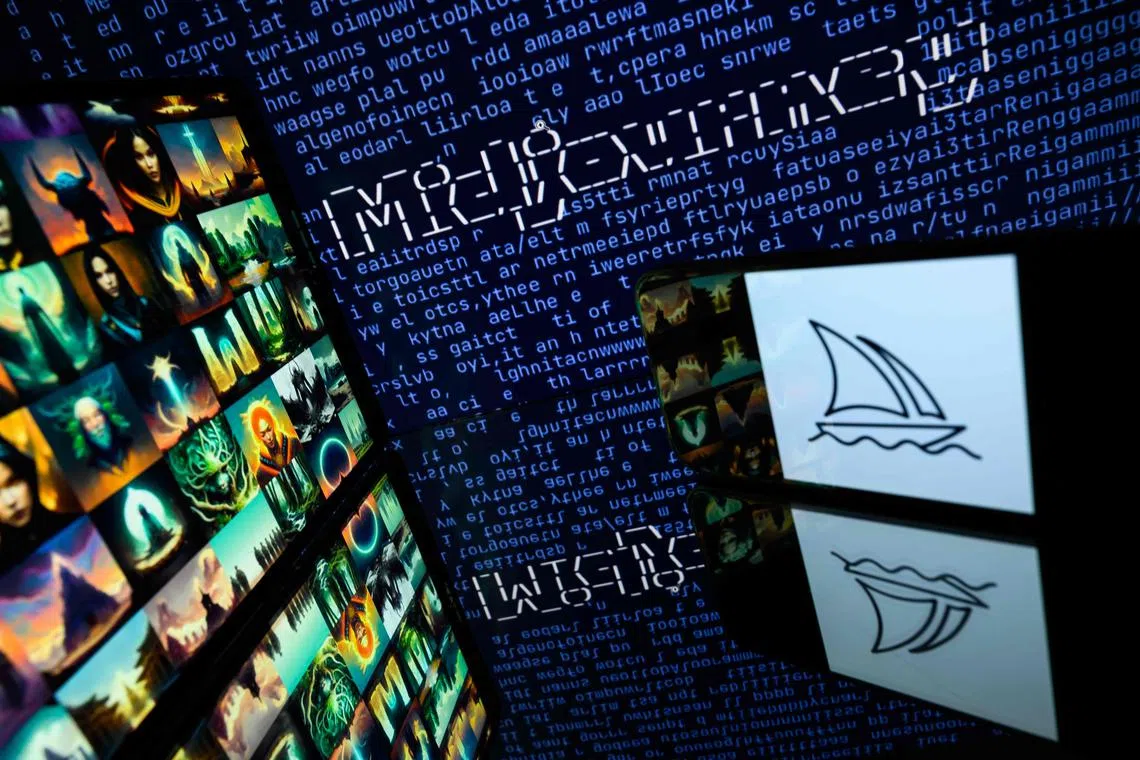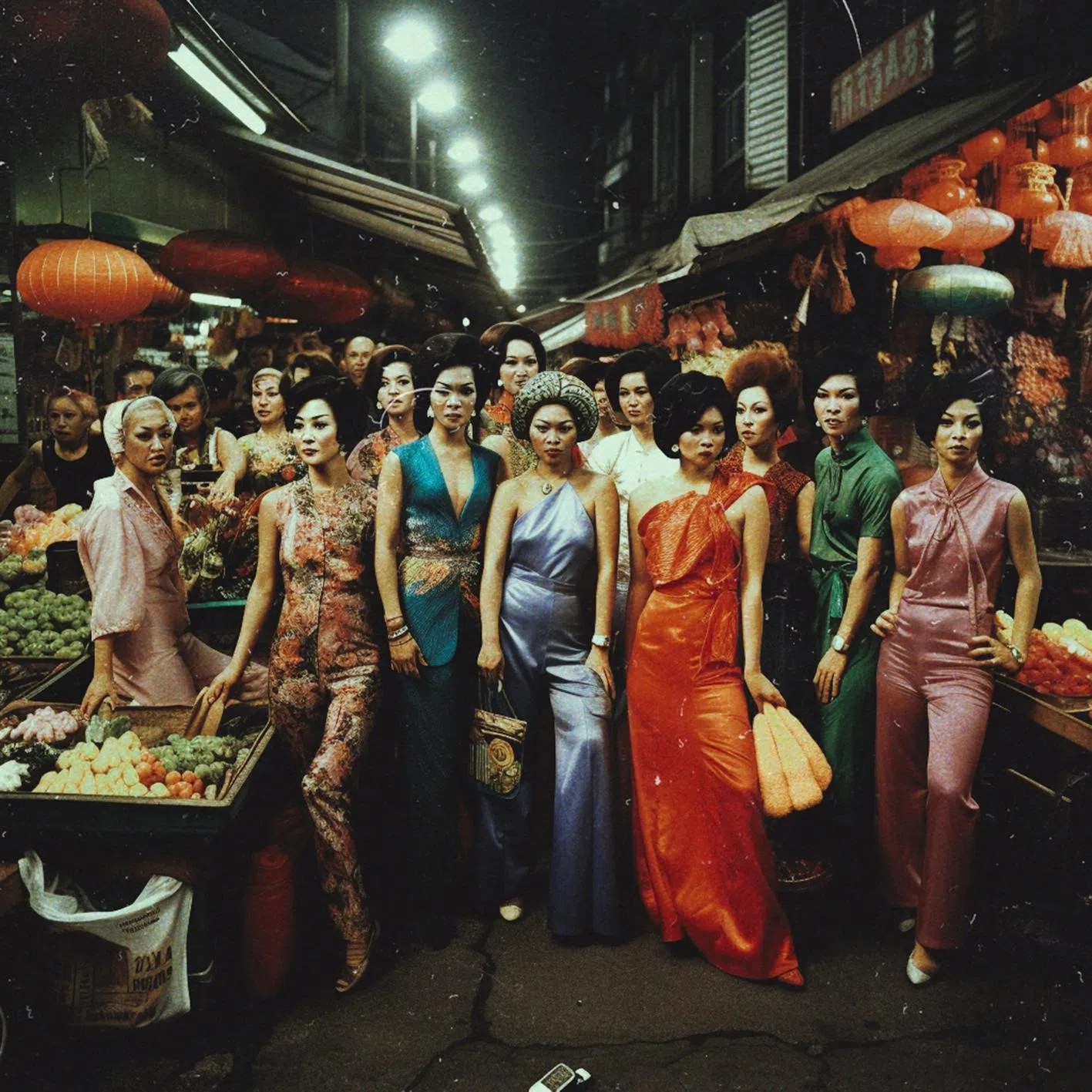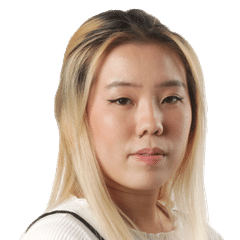AI-generated artwork by bank employees raises questions of copyright and artistic licence
Sign up now: Get ST's newsletters delivered to your inbox

A graphic designer told The Straits Times that AI imaging tools like Midjourney harm the livelihoods of artists like her.
PHOTO: AFP
Follow topic:
SINGAPORE – Local artists were outraged when a Twitter user recently posted about DBS Bank employees using an artificial intelligence (AI) tool to generate art.
The activity, part of an internal DBS event, involved employees producing a picture using the tool and having it printed on a tote bag.
Many comments left on Twitter user Lumpy’s post were on the implications of using AI-generated art and the impact on the livelihoods of artists and photographers.
The graphic designer, who wanted to be known only by her Twitter handle, told The Straits Times that AI imaging tools like Midjourney harm the livelihoods of artists like her.
The introduction of new tools like Midjourney and Stable Diffusion allows anyone to take a text prompt, enter it into the AI, and the technology creates an image that matches the description given in the text prompt.
The main issue is that the images produced are based on the artwork of many artists who have not consented for their works to be used, the 27-year-old added.
She said: “It will be a problem when these tools fall into the hands of unethical artists who profit off the work of others.”
Singapore artist Katherine Ang, 22, added: “By choosing AI over human artists, it shows that people value only the end product, and not its means.”
Another local illustrator and content creator, Ms Nur Sabrina, 27, said it would be “near impossible” for human artists to keep up with how quickly AI art is rising and evolving.
“AI art in Singapore will essentially destroy local art talents and urban culture to an extent,” she added.
A DBS spokesman told ST that the social media post, which was widely shared online, gave the wrong impression about an internal event aimed at introducing employees to AI technology. He added that the bank has been tapping new tools like data analytics and AI over the past few years to improve customer service.
In order for generative AI systems like Stable Diffusion or ChatGPT to generate output based on a user’s prompts, it would need a large amount of data – literary works, art works, to be loaded into the system for machine learning, said National University of Singapore (NUS) law professor David Tan.
But in the process of inputting images for machine learning, content, through the use of an algorithm, will be taken from various websites, he said.
“This means that content is often accessed without permission, said Prof Tan, who is also the co-director of the Centre for Technology, Robotics, Artificial Intelligence and the Law in NUS.
Singapore’s copyright law may not yet be equipped to deal with these issues, he said, but copyright infringement still happens as unauthorised reproduction of text and images is made in the machine training process.
To date, the companies behind these generative AI systems have not disclosed the datasets they use for machine training, he added.
Asked about seeking consent from artists for copyrighted work, Midjourney’s founder and chief executive David Holz told Forbes magazine: “There’s no way to find a picture on the Internet, and then automatically trace it to an owner and then have any way of doing anything to authenticate it.”
Another AI tool, OpenAI, which offers services like ChatGPT and DALL-E, says users own all content generated by the service.
Professor Simon Chesterman, senior director of AI Governance at AI Singapore, said the key issue is if whatever is being reproduced falls under fair use.
Prof Chesterman, who is also the vice-provost of educational innovation at NUS, said: “It is fair use to cite excerpts from a work or read it and comment on the ideas expressed. It is not fair use to copy and reproduce whole chunks.”
While some artists here are opposed to the introduction of AI into art, others like embroidery artist Zoey Wong say there is still space for art that is produced by humans.
The 30-year-old said: “AI is a great medium to incorporate as a form of mixed media, but I do not think it can replace traditional art forms, as the human touch is one of the most important factors in creating art.”
Mr Chia Aik Beng, a 55-year-old local artist, has completely embraced AI in his work and since last year, has started incorporating AI into his content creation.

Local artist Chia Aik Beng has used AI to recreate scenes of Bugis street from his childhood as a way to immerse himself in the sights and sounds back then.
PHOTO: SYNTHOGRAPHY BY AIKBENG CHIA
He said: “I decided to incorporate AI into my photography process to help me visualise ideas and concepts that may not be possible to achieve in real life. This allowed me to explore new storytelling possibilities through my work.”
He added: “Rather than opposing it, I view AI as an opportunity for collaboration.”
But artists still have a responsibility to maintain ethical standards, he said.
Mr Chia said: “As artists, we have to be ethical and attentive when it comes to new media like AI. We have to always be in search of what makes us different and not to get carried away.”


